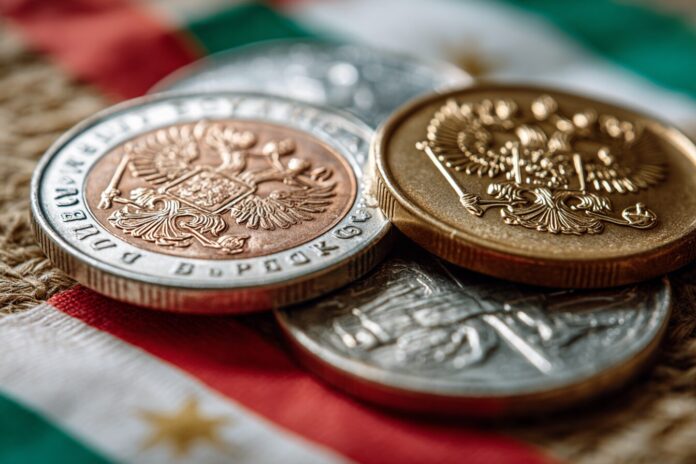Russia and Belarus: Redefining the Currency Order in Eurasia
In a historic move during 2025, Russia and Belarus have reshaped the economic landscape by drastically reducing their reliance on the U.S. dollar. Most importantly, official data now shows that 98.8% of bilateral transactions between these two nations occur in their own national currencies, the Russian Ruble (RUB) and the Belarusian Ruble (BYN). This profound transformation signals a new era in which the traditional dominance of the dollar is being questioned and slowly dismantled.
Because economic pressures, shifting geopolitical alliances, and evolving financial technologies are converging, this change marks a bold pivot in international trade. Furthermore, the strategic realignment enables these countries to buffer their economies from unforeseen external shocks. As showcased by detailed analyses in an article by Bitcoin News, the transition is not only a symbolic move but also a practical strategy for long-term financial sovereignty.
Why the Rush to De-Dollarize?
Several compelling factors have driven Russia and Belarus to rapidly transition from the U.S. dollar to local denominations. Initially, escalating economic sanctions and mounting financial pressures from Western powers catalyzed the move, making local currencies a preferred option to fortify domestic financial resilience. Most importantly, this shift was necessary to shield their marketplaces from volatile international dollar fluctuations.
Besides that, technological advances in financial services have played a crucial role. Modern cross-border payment platforms and robust support from state-backed financial institutions enabled a seamless currency switch. Therefore, this confluence of external pressures and internal technological readiness has propelled the nations into a new currency era. As similar trends are unfolding globally, analysts from various financial institutions emphasize the importance of adapting to these changes in economic practices.
A Closer Look at Currency Dynamics
Throughout 2025, the dynamics between the RUB and BYN illustrated notable changes. Because market forces and economic policies directly impact exchange rates, the Russian Ruble appreciated significantly against its Belarusian counterpart. Notably, the RUB-BYN rate peaked at 0.04060 BYN per RUB by the end of May, with a yearly average of 0.03657. This adjustment, as reported by Exchange Rates, reflects both domestic policy decisions and the underlying strength of the Russian economy.
Moreover, the Belarusian Ruble experienced a marked decrease in value, falling by more than 26% relative to the RUB. Because such fluctuations are influenced by economic size and market confidence, this decline underscores the shifting power dynamics between the two currencies. Therefore, businesses involved in cross-border trade must adopt real-time risk management strategies to navigate such volatility effectively, as detailed insights from various financial history pages confirm.
Implications for Global Trade and Finance
The profound move by Russia and Belarus extends beyond regional trade and impacts the very fabric of global finance. Most importantly, this transition challenges the long-standing role of the U.S. dollar as the default reserve and transaction currency in international trade. Because the dollar has been central to global commerce for decades, this development suggests that future shifts may occur, creating a multipolar currency system.
Furthermore, as other geopolitical players observe the de-dollarization trend, similar strategies might be adopted. Therefore, global investors and policymakers need to be vigilant and agile in their approaches to manage potential fluctuations and systemic risks. As highlighted by financial experts, embracing diverse national currencies could reduce dependency on Western financial systems and introduce greater stability in certain contexts.
Strategic Takeaways for Businesses and Policymakers
Multinational corporations and trade-focused businesses must now prioritize currency risk management and economic adaptability. Because transaction costs in cross-border trade can be significantly reduced when dealing directly in national currencies, adapting to this paradigm shift is increasingly crucial. Most importantly, businesses must integrate advanced fintech solutions to navigate this evolving economic landscape.
Besides that, policy makers should closely monitor emerging regulatory trends that accompany de-dollarization. Therefore, conducting comprehensive risk assessments and leveraging digital financial technologies can prepare organizations for sudden market shifts. In addition, embracing these changes offers an opportunity to explore more secure and efficient financial systems that are less dependent on traditional dollar-centric models.
The Future of De-Dollarization
As Russia and Belarus champion this new currency model, the future of global trade appears more diverse and multipolar. Because historical trends indicate that economic shifts can trigger worldwide repercussions, the current transition may inspire other regions to adopt similar strategies. Most importantly, if geopolitical tensions persist, a steady migration away from the dollar could reshape international financial norms.
Moreover, this bold step is likely to encourage further innovation in digital payment technologies and cross-border financial services. Therefore, both policymakers and investors are urged to remain agile and responsive to the evolving financial environment. As this historic journey unfolds, the de-dollarization movement serves as a critical case study on how nations can reclaim their economic autonomy and redefine global financial relationships. For historical insights and comparative data, readers may refer to the detailed exchange rate histories available on Wise and Wise Currency Converter.
References and Further Reading
For a deeper exploration of these trends, the following resources provide comprehensive insights and detailed analysis:
- De-Dollarization Hits Critical Mass With Russia-Belarus Near-Complete Currency Transition
- Russian Ruble to Belarusian Ruble Exchange Rate History
- Belarusian Ruble to Russian Ruble Exchange Rate History
- Exchange History: RUB to BYN
- Exchange History: BYN to RUB
Because the global financial landscape is rapidly evolving, staying informed through reliable sources is crucial for anyone engaged in international commerce. Transitioning away from the U.S. dollar not only reshapes local economies but also sets the stage for a broader restructuring of global fiscal policies.



